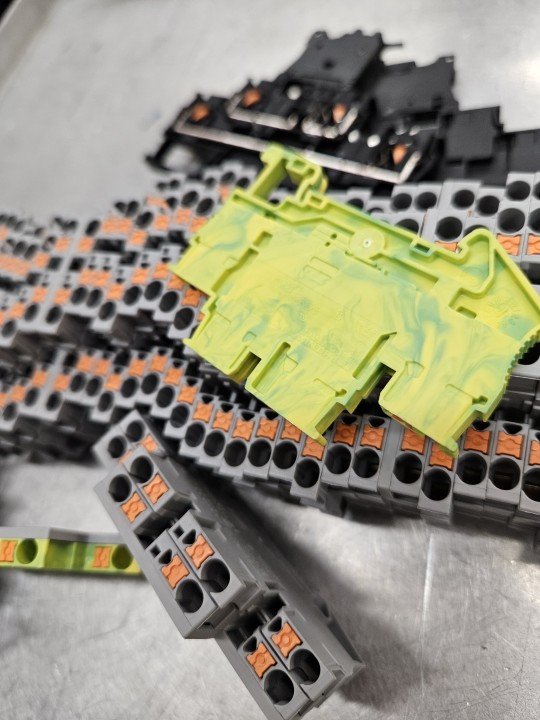Connecting the Dots: A Shockingly Good Tale of Electrical Terminal Blocks in Industrial Control Panels
In the electrifying world of industrial control panels, where wires weave like a web of intrigue and circuits dance to the rhythm of automation, one unsung hero silently plays a crucial role—the humble electrical terminal block. These unassuming connectors are the glue that binds the chaos of wires into the symphony of industrial control.
A Shocking Tale of History
Let's rewind the clock to the early days of electricity, where sparks of innovation flew faster than a Tesla coil. The birth of electrical terminal blocks can be traced back to the late 19th century when pioneers in electrical engineering were untangling the mess of wires in the burgeoning field of industrial automation.
Enter the terminal block, a simple yet ingenious solution to organize and streamline the complex network of wires. It was a eureka moment that sparked a revolution in control panel design, making it easier for engineers to connect and disconnect circuits without the hair-raising chaos.
Types Galore: Terminal Blocks Unplugged
Fast forward to the present day, and terminal blocks have evolved into a diverse family tree. From the stately barrier terminal blocks to the versatile DIN rail-mounted types, these connectors come in more flavors than a power surge in a lightning storm.
Barrier Terminal Blocks: The dignified elders of the terminal block family, these have been around the block a few times. With insulating barriers, they keep wires from getting too cozy with each other, preventing short circuits and sparking a love story best avoided.
DIN Rail Terminal Blocks: These are the rockstars of the terminal block world, strutting their stuff on DIN rails. Easy to install and swap out, they're like the backstage pass of control panel design. Just slide them in and let the show begin!
Pluggable Terminal Blocks: The social butterflies of the terminal block kingdom, these connectors love to mingle. With their plug-and-play design, swapping components is a breeze. It's like the industrial control panel version of musical chairs, minus the chaos.
Fuse Terminal Blocks: Safety first, folks! Fuse terminal blocks ensure that when things get too heated, they don't blow a fuse. These blocks come with built-in fuse holders, ready to take the hit and keep the circuit in tune.
Ground Terminal Blocks: The peacekeepers in the circuit world, ground terminal blocks ensure that excess electricity finds its way back to Mother Earth. They're the Gandalfs, saying, "You shall not pass" to electrical surges.
Uses: Where Terminal Blocks Spark Joy
Now that we've met the cast of characters, let's dive into the drama of how terminal blocks steal the spotlight in the industrial control panel saga.
Wiring Order from Chaos: Imagine a world without terminal blocks—a spaghetti of wires where chaos reigns supreme. Terminal blocks bring order to this madness, organizing wires into neat rows and columns, making troubleshooting a breeze.
Easy-peasy Maintenance: When a component goes kaput, the last thing you want is a labyrinth of wires standing in your way. Terminal blocks simplify maintenance, allowing engineers to swap out faulty parts faster than you can say "short circuit."
Flexibility in Design: Thanks to the diverse types of terminal blocks, designers have the flexibility to choose connectors that fit their panel's personality. It's like choosing the right outfit for a party—except in this case, the party is an electrifying celebration of automation.
Safety Dance: With features like insulation barriers and fuse holders, terminal blocks are the unsung guardians of safety in control panels. They keep the sparks flying where they belong and ensure that shocks are limited to dance floors, not circuits.
Conclusion: The Electric Symphony
In the grand tapestry of industrial control panels, electrical terminal blocks play a starring role, connecting circuits and conducting the electrifying symphony of automation. From their humble beginnings in the 19th century to the diverse types we see today, terminal blocks have come a long way.
So, the next time you marvel at a control panel orchestrating the ballet of machines, remember the unsung heroes behind the scenes—those terminal blocks that make the magic happen. They may not steal the spotlight, but without them, the show wouldn't go on. Keep it connected, keep it electrified, and let the terminal blocks conduct the symphony of automation!

